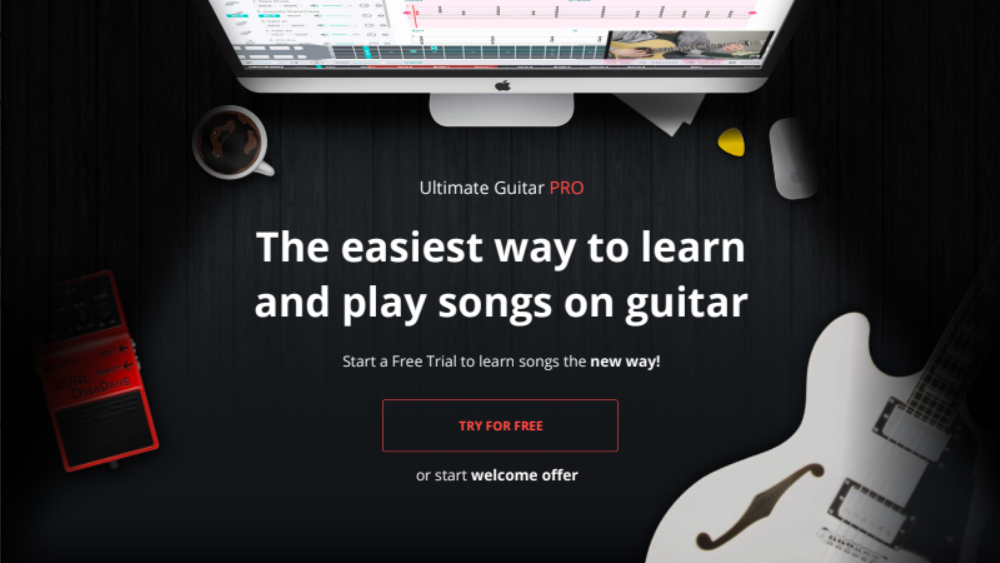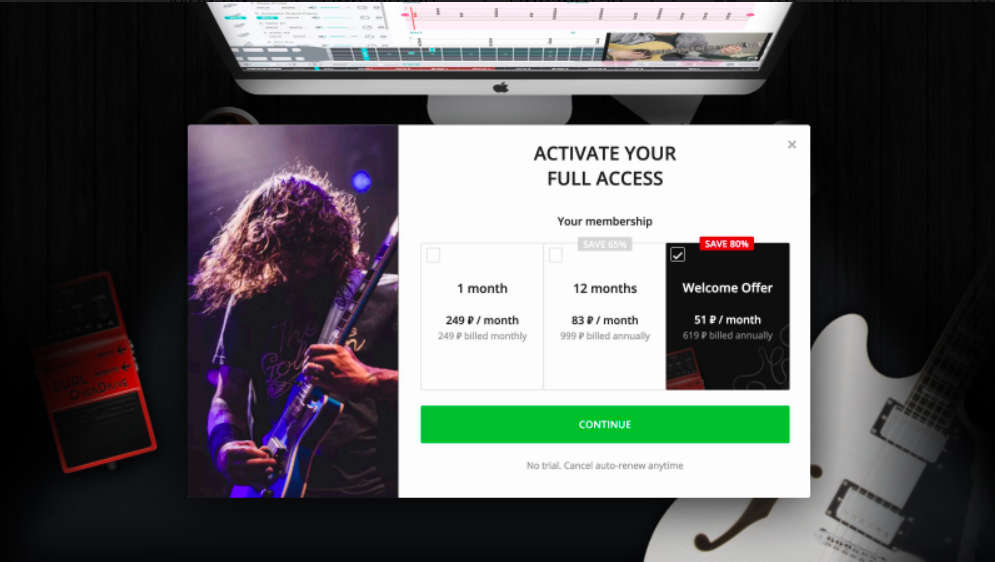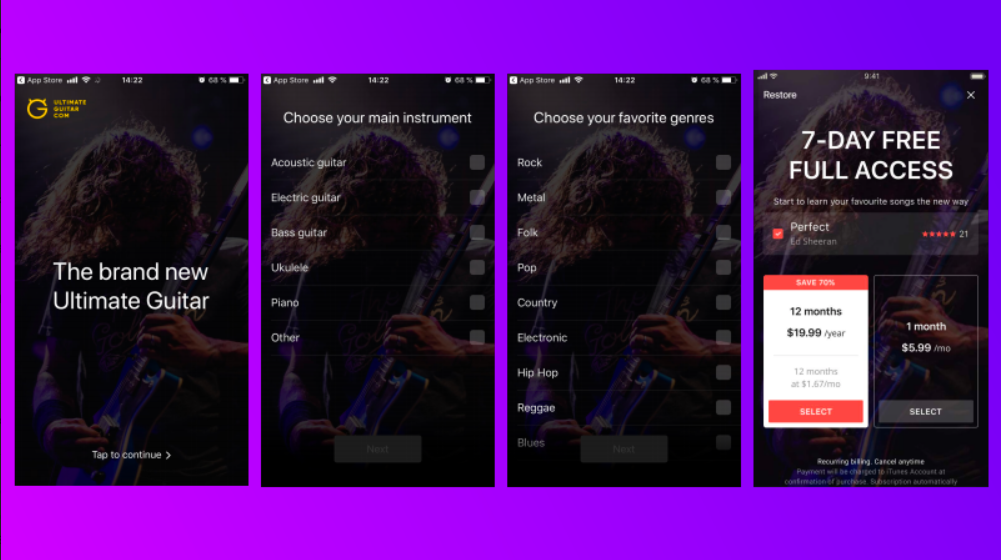Boosting Marketing Absurdity: Proven Cases
The executive director of the world's most popular service for musicians Ultimate Guitar, Mikhail Trutnev, spoke at the Epic Growth Conference about an approach that will help increase the number of ideas and, consequently, lead to the growth of the product. This approach is called “irrational marketing moves” or “absurd hypotheses.”
Watch the video and read the notes under the cut.
In his report, Mikhail Trutnev shared his vision:
Why do absurd, illogical and paradoxical ideas work? First of all, they work because people act irrationally when making decisions. Earlier, I thought that people make decisions when making decisions. In fact this is not true.
Let's imagine. When you choose a friend, you are not guided by such rational arguments as: he is polite, kind, and treats parents well. You on a subconscious level understand: "This is my man." The same goes for choosing a girl, boyfriend, car or home. We just see - this is my car, this is my man.
Often people choose and buy products by this very logic. Referring to a transactional analysis, which explains that a person’s decision is caused not by the moment when he is already making a decision, but by the scenario or history of how he got at that moment. And, accordingly, absurd ideas are ideas that fall into this very scenario, which is incomprehensible even to the person himself.
Using this approach, we have received a multiple increase in user and financial metrics in the product. In my report I will talk about four main ideas.
What does this mean from an experimental point of view? The more arguments or values toward your product or any decision, the less significant the first argument.
If you have one powerful argument in favor of buying your product - leave it all. As in the example of the Ultimate Guitar landing page (see below), there is only one argument: "the easiest way to learn and play songs on the guitar."

It is not written about the largest catalog, it is not written that your song may be here. Nothing is written at all. Simple is the easiest way to learn and play. And it works.
Another option is to not say anything about product values.
The image (see below) is another of our services for musicians who play notes.

On the page above there is a Start Free Trial button. (Note * for illustrative purposes, I highlighted the button with a pink gradient and placed it in the center, of course, this is not on the site).
In this case, we do not say anything about why the user should buy the product, we do not show any value. A person is on the free part of the product, he studies the notes of the “Bohemian Rhapsody” and suddenly sees the Start Free Trial button without demonstrating the value of the product. Just written Start Free Trial and it works.
We recall the transactional analysis. If a person has already decided that he will buy a paid version, then he does not need to interfere, there is no need to explain anything. Faith does not require any evidence. Try a person who believes in God to convince that there is no God. Or vice versa. This does not work. Also here. If a person already believes that he needs to buy - do not bother, do not explain anything, just let him buy it.

After the user clicked Start Free Trial, the purchase process begins without showing the product itself. If we think that we have fallen into an irrational scenario when a person has already decided what he will buy, then do not confuse him with your product. Maybe he will start to watch the product and he will not like it.
And another example about a mobile application.
68% of purchases in mobile applications are made on our tour (onboarding).
68% of our users ’purchases are made when a person hasn’t seen the product. Onboarding begins after the user has already downloaded the application.
In the image below you can see our onboarding. One guitarist in the background and nothing about the product - neither about songs, nor about notes, nor about the catalog. Just a set of questions about which we will talk later. Again, we don’t show the product and get a higher conversion in Trial or in purchases. The authorship of this approach was suggested to me by Mikhail Tokovinin, who does amoCRM.

We are used to what you need to describe in detail what functions and advantages of the product we have. The idea is not to do this.
Back to the onboarding of the Ultimate Guitar mobile app. This approach in onboarding converts well.
What really interests people? They themselves, of course. People are only interested in people, so all of our onboarding is about man. They ask him: “Choose the instrument that you play; choose your favorite genre; choose the songs you like. ” I am almost 100% sure when people go through a touring tour, they think that our application adapts to these issues.
Thus, we do not tell the user about the functions in the application, but we give him the opportunity to think through himself that we have it. He answers questions to himself, and we get a high conversion.
There is another point that works. We have user information. If we know that this user visited a specific song, then in the sale layer of onboarding we will indicate this song, so the conversion also increases.
It is important for us that the user buys the most expensive annual plan. Why? We know from data and analytics that the person who invested more money in our product is more involved, plays more music, plays more, which means he gets more pleasure from our product and most importantly from his hobby.
This is a win win solution. Therefore, we are doing everything so that as many people as possible buy a long and expensive plan. He, conditionally, dear. In fact, the expensive one is monthly: the user will buy a monthly plan, will not be engaged, will not come to the application, and his money will be lost. And the money that he spends on the annual plan is more likely to bring him a return.
There is still a win win win approach. When a user takes an annual plan without a trial. Because during the trial, people are also quite relaxed about their investments and may not come to the application.
More reports on product marketing can be found on the @epicgrowth Telegram channel .
Epic Growth Conference (www.egconf.ru) is a product marketing conference organized by Mobio and Getloyal with the support of myTracker, Minimob and AppMetrica.
Watch the video and read the notes under the cut.
In his report, Mikhail Trutnev shared his vision:
- Why do absurd ideas work?
- Four absurd marketing ideas for the first user session in the paid part of the product
- Two rules for teams working on paradoxical ideas
People make irrational decisions
Why do absurd, illogical and paradoxical ideas work? First of all, they work because people act irrationally when making decisions. Earlier, I thought that people make decisions when making decisions. In fact this is not true.
Let's imagine. When you choose a friend, you are not guided by such rational arguments as: he is polite, kind, and treats parents well. You on a subconscious level understand: "This is my man." The same goes for choosing a girl, boyfriend, car or home. We just see - this is my car, this is my man.
Often people choose and buy products by this very logic. Referring to a transactional analysis, which explains that a person’s decision is caused not by the moment when he is already making a decision, but by the scenario or history of how he got at that moment. And, accordingly, absurd ideas are ideas that fall into this very scenario, which is incomprehensible even to the person himself.
Using this approach, we have received a multiple increase in user and financial metrics in the product. In my report I will talk about four main ideas.
The first idea is not to tell the user about the value of the product.
What does this mean from an experimental point of view? The more arguments or values toward your product or any decision, the less significant the first argument.
If you have one powerful argument in favor of buying your product - leave it all. As in the example of the Ultimate Guitar landing page (see below), there is only one argument: "the easiest way to learn and play songs on the guitar."

It is not written about the largest catalog, it is not written that your song may be here. Nothing is written at all. Simple is the easiest way to learn and play. And it works.
Another option is to not say anything about product values.
The image (see below) is another of our services for musicians who play notes.

On the page above there is a Start Free Trial button. (Note * for illustrative purposes, I highlighted the button with a pink gradient and placed it in the center, of course, this is not on the site).
In this case, we do not say anything about why the user should buy the product, we do not show any value. A person is on the free part of the product, he studies the notes of the “Bohemian Rhapsody” and suddenly sees the Start Free Trial button without demonstrating the value of the product. Just written Start Free Trial and it works.
We recall the transactional analysis. If a person has already decided that he will buy a paid version, then he does not need to interfere, there is no need to explain anything. Faith does not require any evidence. Try a person who believes in God to convince that there is no God. Or vice versa. This does not work. Also here. If a person already believes that he needs to buy - do not bother, do not explain anything, just let him buy it.
The second idea is not to show the product to the user.

After the user clicked Start Free Trial, the purchase process begins without showing the product itself. If we think that we have fallen into an irrational scenario when a person has already decided what he will buy, then do not confuse him with your product. Maybe he will start to watch the product and he will not like it.
And another example about a mobile application.
68% of purchases in mobile applications are made on our tour (onboarding).
68% of our users ’purchases are made when a person hasn’t seen the product. Onboarding begins after the user has already downloaded the application.
In the image below you can see our onboarding. One guitarist in the background and nothing about the product - neither about songs, nor about notes, nor about the catalog. Just a set of questions about which we will talk later. Again, we don’t show the product and get a higher conversion in Trial or in purchases. The authorship of this approach was suggested to me by Mikhail Tokovinin, who does amoCRM.

The third idea is to remove the description of functions and product features.
We are used to what you need to describe in detail what functions and advantages of the product we have. The idea is not to do this.
Back to the onboarding of the Ultimate Guitar mobile app. This approach in onboarding converts well.
What really interests people? They themselves, of course. People are only interested in people, so all of our onboarding is about man. They ask him: “Choose the instrument that you play; choose your favorite genre; choose the songs you like. ” I am almost 100% sure when people go through a touring tour, they think that our application adapts to these issues.
Thus, we do not tell the user about the functions in the application, but we give him the opportunity to think through himself that we have it. He answers questions to himself, and we get a high conversion.
There is another point that works. We have user information. If we know that this user visited a specific song, then in the sale layer of onboarding we will indicate this song, so the conversion also increases.
The fourth idea is to lure the user with a large payment
It is important for us that the user buys the most expensive annual plan. Why? We know from data and analytics that the person who invested more money in our product is more involved, plays more music, plays more, which means he gets more pleasure from our product and most importantly from his hobby.
This is a win win solution. Therefore, we are doing everything so that as many people as possible buy a long and expensive plan. He, conditionally, dear. In fact, the expensive one is monthly: the user will buy a monthly plan, will not be engaged, will not come to the application, and his money will be lost. And the money that he spends on the annual plan is more likely to bring him a return.
There is still a win win win approach. When a user takes an annual plan without a trial. Because during the trial, people are also quite relaxed about their investments and may not come to the application.
More reports on product marketing can be found on the @epicgrowth Telegram channel .
Epic Growth Conference (www.egconf.ru) is a product marketing conference organized by Mobio and Getloyal with the support of myTracker, Minimob and AppMetrica.
